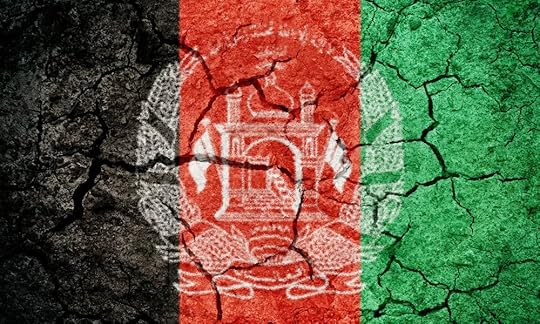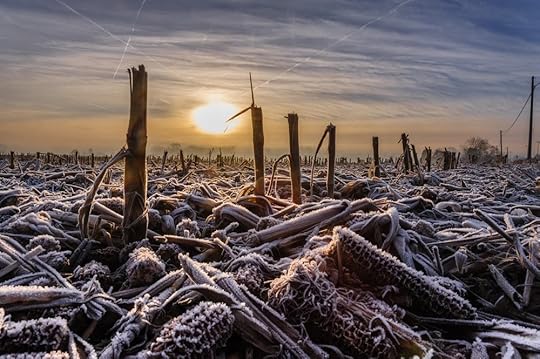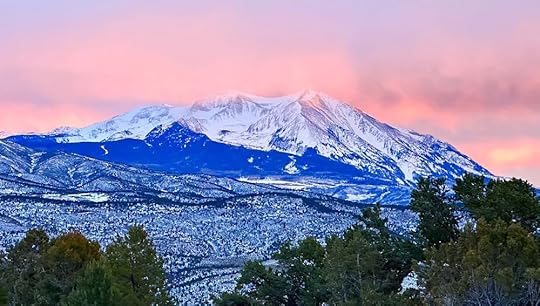Kevin Land Patrick's Blog
November 30, 2025
ARIDITY: AFGHAN CIVIL UNREST AND MASS MIGRATION

I recently identified water as what could be the driver for regime change in Iran. https://kevinlandpatrick.substack.com/p/a-state-of-failure-the-coming-unrest . Now I turn to Kabul, the capital of Afghanistan. Like Tehran, Kabul faces the potential to literally run out of water forcing migration and suffering in a country forsaken by international relief due to the politics of its leadership.
To be sure, Kabul’s water woes have been decades in the making, but since the Taliban returned to power in August of 2021, the problems have worsened. A combination of the effects of climate change, water mismanagement, and rapid urban growth have intensified groundwater withdrawals. “Mining” groundwater is the name for when groundwater withdrawals exceed recharge. Kabul’s groundwater mining is reportedly 34,000 acre feet annually and growing. Water depths have declined 80-100’ and many wells have run dry. Those wells that continue to produce are increasingly contaminated by salts.
Why? How can a city, which sits within sight of the Hindu Kush, a mountain range with heights in excess of 20,000’ and snow covered in Afghanistan’s brutal mountain winters, be dry? The answer is a combination of factors:
1. Climate change has increased evaporation and made the dry season longer;
2. Urban growth. With population comes increased demands;
3. Mismanagement: Back to back wars (Soviet-Afghanistan War 1979-1989), US War on Terror (2001-2021), and the Taliban who war against their own people has resulted in a brain drain and wholesale disregard for water planning; and
4. Inadequate Financial Resources. Infrastructure (dams, reservoirs, delivery systems require capital. No one is rushing to the Taliban’s aid when they persecute and enslave their own people.
A combination of factors or a revealing common thread? The principle common threads between Tehran and Kabul are two: Mismanagement and climate change.
Climate change is drying the continents, increasing evaporation, and robbing soil moisture and groundwater recharge. Remember, evaporation returns water to the surface, but when 70% of the Earth’s surface is covered with saltwater oceans, 70% of the evaporative moisture from land falls on ocean, lost from the continents. A recent UN study revealed that three-fourths of the Earth’s land masses were suffering some form of drying as a result of changing climactic conditions in the last thirty years.
The second factor, of course, is something that is inexcusable: Water mismanagement. Places like Cape Town that in 2018 nearly ran out of water implemented conservation, instituted water education, and intensified proper water planning. That city is improving its water resilience. Will Kabul and Tehran? Likely doubtful. When people run out of water, are forced to migrate, and begin to suffer, they blame leaders. Like Tehran, it is a recipe for civil unrest in Kabul and regime change.
November 23, 2025
AN HONEST ARGUMENT ON CLIMATE CHANGE

There are some, perhaps many, that say climate change is a hoax. One person in particular comes to mind. But here’s the thing. That’s not being honest. It’s not that some really disagree with climate change, they disagree with the urgency, severity, and most of all, cost of doing something about it.
A truthful exercise would not be to deny the science but make it an economic argument that the cost to the economy is too great to address it. While I disagree, that at least is an honest argument on climate change.
So, you say, it hasn’t been proven. Climate change is just the weather. It’s a natural phenomenon. Not really. The number of reputable and recognized scientists who believe that climate change is not real one can count on one hand, compared with the overwhelming number of scientists and models that confirm that fact.
It’s hard to argue with science and records. Two quick charts tell the whole story:


Source: National Oceanic Atmospheric Administration,: https://www.climate.gov/news-features/understanding-climate/climate-change-global-temperature
Atmospheric carbon dioxide levels increased 3.75 parts per million (ppm) to 422.7ppm between 2023 and 2024, the greatest increase in records. As the charts show, its exponential. What does this mean?
Ten of the warmest years of record have occurred in the past decade. Temperature is heat. Heat is energy. The more energy in the atmosphere, the greater atmospheric events, storms, droughts, precipitation events. Each of these have profound economic costs. It’s Thanksgiving in the Rockies where I live and my lawn is green at 7,100’. Not normal. I say that because I’ve lived here for nearly half a century. Skiers are not happy and wildfire responders are nervous.
The honest argument for those that reject climate change is what is the economic cost to the economy versus the cost of not addressing it. That’s an argument that at least has integrity.
November 16, 2025
A STATE OF FAILURE: THE COMING UNREST IN IRAN

Tehran is the latest example of a self-inflicted wound in the water sphere. It is inconceivable that the capital of a nation, a city of nearly ten million, may have to be evacuated. Why? Not Israel’s 12-day war, not a limited US attack on nuclear facilities (with questionable results), but by Iran’s own mismanagement.
Two decades of dryness and six years of severe drought has caught up to the Islamic Republic. Normally, such a climactic event would not severely challenge a well-planned resilient municipal water system. Not so in Iran, where over-consumption, mismanagement, and corruption have led municipal reservoirs being less than 5% of capacity and the government privately planning for evacuations.
While the West has long wished for the Islamic Republic to fall, it may well be civil unrest from within that effects change. Already, there have been student protests over water shortages at Tehran’s Al-Zahara University, and discontent among the populous who blame the rigidly controlled clerical government.
The Central Intelligence Agency publishes The World Factbook, the latest having been published in 2021. A 2012 Global Water Security, Intelligence Community Assessment developed at the request of the Department of State, identified water stress, particularly in the Tigris-Euphrates, Nile, Jordan, and Indus basins. Taken together, these studies reveal that stress caused by water shortages stands as one, if not the primary, threats to regional instability.
Why doesn’t Iran have ample water? Iran shares the Tigris and Euphrates with Turkey, Syria, Kuwait, and Iraq. While Iran’s watercourses are not major contributors to the basin, the Shatt al-Sarab waterway, formed where the Tigris and Euphrates merge, serves as a boundary between Iraq and Iran. Iran must make do with what it has. Groundwater over-pumping has depleted sources, made land unfertile due to salinization, and land subsidence is common. Iran’s climate is dry save for the rainy season between October and March. That translates for the need for storage (reservoirs). Tehran’s supply comes largely from the Lar River fed from the Alborz mountain range that separates Tehran from the freshwater Caspian Sea to the North. Supplies exist, infrastructure does not. That’s mismanagement.
Iran is rich in natural resources: oil, natural gas, chromium, copper, iron ore, lead, manganese, zinc, and sulfur. It’s governance has frustrated business dealings necessary for the country to develop and market these resources. Over 86% of the population is below 54. Over 75% of the population is urban and they are well educated. That is recipe for regime change by civil unrest fueled by water scarcity.
November 11, 2025
SNOW AND FIRE

It’s time to pay attention…not panic, but concern. The NOAA 30-day and seasonal forecasts are out and they track the Farmer’s Almanac predictions for another water-short winter. In the west, water is an important topic but fire is the topic.
With ten of the warmest years of record having occurred in the past decade, continental drying is accelerating. Soil moisture is being depleted at an alarming rate. One hundred and fifty-eight rivers originate in Colorado, where the Rockies squeeze moisture moving west in the form of snow. Snowpack is nature’s reservoir, the source of our rivers.
The NOAA forecasts show a warmer, dryer, and windier winter in the lower Colorado basin and a warmer and windier winter for the upper Colorado River basin. That forebodes drought. Drought translates to wildfire risk. Warmth means more precipitation falls as rain, not snow. With that runoff occurs at once, not measure and slowly over the spring and summer. Wind robs snowpack of its water content in a process known as sublimation. Even if the heavens bless the Rockies with an average water year, warmth and wind can reverse a good snowpack, just as it did in 2025.
Wind also brings dust from the great American deserts in Arizona and Utah that falls on snowpack in the Rockies. As you may recall from the last time you rented a black car in Arizona, the darker an object, the hotter it becomes from the sun. The process of albedo, the sun’s rays are absorbed, not reflected. The result is snowpack melts faster. This is why with the loss of arctic sea ice, the Arctic is warming at a rate three times that of the rest of the planet (the ocean is darker than sea ice).
So, what to do? What can one do? On a micro scale, create a defensible fire buffer around homes, conserve water, make personal choices that reduce you water and carbon footprint. On a macro scale, vote. As a country, we seem to talk past the other side. In reality, everyone cares about their children’s future, about the American farmer and food security, and everyone wants a cleaner and secure environment for future generations. We aren’t as divided as the new channels and pundits proclaim.
With any luck, NOAA and the Farmer’s Almanac are wrong. Wishful thinking is seldom a good last resort.
November 2, 2025
A HISTORY OF INCOMPLETE DECISIONS

I was stuck in an airport with flight delays last week returning from being an expert witness in a water dispute. It was an interesting case valuing hundreds of millions in water where the other side was making the argument that the value of water would drop because the climate of the Southwestern United States was all going to mysteriously revert to cool and wet with a plethora of water. In other words, Arizona was going to become temperate and wet and that climate change was not a thing.
Never mind that Arizona has not been cool and wet since the Eocene Epoch and Mid-Cretaceous era, a mere 40 million and 70 million years ago (respectively). Never mind that there is no scientific support for such a belief, and never mind that people in the water industry are smarter than to believe such fantasies.
As I sat waiting for the World Series to start at Elways in the Denver airport (great burgers by the way), I happened upon a new documentary on Netflix entitled The White House Effect (2024, Directed by Bonnie Cohen, Pedro Kos & Jon Shenk). It’s a multiple award winning documentary on the history of the climate crisis. The documentary explores climate change, identified by both Republican and Democrats alike in the 1980s as a reality that could not be ignored (including then President H.W. Bush, whose background as a Texas oilman, didn’t preclude him from pledging to tackle what he labeled a crossroads that the nation had to address). And yet, that opportunity to confront the problem championed by EPA Administrator Bill Reilly and President Bush was undermined by the president’s own Chief of Staff John Sununu and industry.
It is a fascinating story of lost opportunity. Publilius Syrus, a writer-philosopher in 60 BC during the reign of Julius Caesar, wrote “A good opportunity is seldom presented, and is easily lost.” Such was the case.
In 1970, an astonishing 10% of the entire population of America marched on Earth Day in support of addressing environmental concerns. In the space of four short years, between 1969-1972, a bipartisan Congress passed the National Environmental Policy Act (1969), the Clean Air Act (1970) and the Clean Water Act (Federal Water Pollution Control Act of 1972). There were few nay votes. How did a handful of lobbyists defeat the will of the people, President, and Congress?
The answer is told well in the film. And, it is a timely story in today’s debate over the environment, civil liberties, and the role of the three branches of government. It all comes down to voice. The loudest and most persistent voice is unfortunately the one most people listen to. And, it is a story of how, in our democracy, everyone’s voice should and does matter. See it. It is inciteful no matter where you stand on the issues.
October 26, 2025
RUNNING AMOC

I’ve written before on the dangers that confront us should the Atlantic Meridional Overturning Circulation (AMOC) collapse, but the release of a new report raises the stakes.
The AMOC is the Atlantic’s conveyor belt bringing warm saline water from the tropics (because of the higher rate of evaporation in the tropics, salinity is increased) to the North Atlantic. When that water meets the North Atlantic it cools, sinks, and starts its path back in a loop to the tropics. The action is critical in exchanging heat, nutrients, salinity, carbon capture (carbon sink), to maintain the ocean’s ecosystem. It is what keeps England and Europe warmer than their latitudes would otherwise permit.
Why is the AMOC a concern? It has been weakening dramatically. A few years ago, models showed the risk of its collapse at 10%. The new study, published in the journal Environmental Research Letters assessed the numerous models used by the United Nation’s Intergovernmental Panel on Climate Change.
The findings are alarming. Models now show that the tipping point where the AMOC shuts down is nearly inevitable. Even at low-emission scenarios, a 25% chance is assigned to the collapse of AMOC by 2100. The high emission model has those odds at 70% and not 50-100 years down the road but as early as 2050-2070. In our children’s lives.
What would happen? The result would be a shift in the tropical rain belt that hundreds of millions rely on for food production. Europe would face extreme cold, as much as a 10-15˚F shift. Winter ice could result as far south as the British Isles. In the United States, far colder winters would occur with disruptions to rainfall patterns interrupting the agricultural industry that is the backbone of the northern plains states. Adaption in parts of the Northern Hemisphere would be impossible forcing migration and the loss of traditional forms of agriculture. And the shift would occur rapidly. We aren’t talking the apocalyptic scenes from the movie The Day After Tomorrow, but a horror show it would be.
Again, what I want to stress is this isn’t a left versus right issue, it’s an economic and national security issue. It’s better to view these warnings in terms of stock portfolios, 401ks, the culture of the American farmer, and the costs of groceries than in left versus right terms. In the end we are all in the same damn boat (which we might need as a loss of AMOC is projected to increase sea level rise on the Eastern seaboard of the United States by as much as two feet).
Personally, I would go with the 25% rather than the 70% odds.
October 19, 2025
SWIMMING UPSTREAM

I wanted to write today on an important conference of nations set for November but feel the need to first write of how proud I am of our country.
Yesterday a reported seven million people exercised their Constitutional right to “peaceably assemble, and to petition the government for a redress of grievances” (quoting from the First Amendment). The fact that there were no reported arrests or acts of violence by those who assembled to air their grievances makes me in awe of our nation and people.
The founding fathers knew that nothing is more patriotic than peacefully assembling to express an opinion or protest grievance. And nothing is less American than labelling those who express an opinion other than your own wrong, hateful, or anti-American. These rights and principles set our nation apart from countries who are less free. Those who would restrict these constitutional freedoms lack an understanding of our Constitution and fail to see the direction of the current of history.
Now on to the November conference. COP30 is organized by the UN Framework Convention on Climate Change (UNFCCC). The 30th United Nations Climate Change Conference will be held in Belém, Brazil between November 10-21. Its location is not an accident. Belém sits at the mouth of the Amazon, which is front and central in the conference as representatives from 190 countries discuss and formulate solutions in the form of climate finance, emissions reductions, resilience and conservation. After President Trump’s September speech before the UN where he labelled climate change a con-job and hoax, it is presumed that the United States will not formally participate for the first time in thirty years.
To many, like myself, I see missed opportunities to shape and mold solutions to a problem that should not be a left versus right argument. ExxonMobil, Shell, and a host of other energy companies typically participate. They see the flow of history and adjust their portfolios accordingly.
Renewable energy sources have replaced coal as the largest source of electrical production in the world. In the first half of 2025, renewables (solar, wind and hydro) contributed 34.3% of all global electricity generation, while coal fell to 33.1%. Markets and utilities see the direction the current is flowing.
The costs of operating coal source power plants is staggeringly high compared to wind, solar, hydro, and yes, high efficiency natural gas. It’s business sense. For example, Shell Energy is moving toward diversification with a strong commitment toward wind, solar and carbon capture technologies. Why? Perhaps they see which way the flow of history is taking the world.
October 12, 2025
WHAT THE FUTURE HOLDS

It doesn’t take a psychic to grasp what our future may bring when it comes to storm intensity, drought frequency, water demands, and the effect of a shifting climate on the nation’s economy. First, let’s dispel the notion that discussing and recognizing a shifting climate is a political discussion. It is not. To disregard, reject, and deny facts is not only to ignore reality but commit malpractice if you are in the water industry, an investor, banker, economist, or a farmer.
Every year between 2015 and 2025 has ranked in the top 10 hottest years on record. Heat equals energy. Stronger storms, more volatile weather patterns, lengthening of crop growing seasons (and air-conditioning seasons), increased evaporation, and drying of continental mass. The result is increased water consumption, expanding electrical demands, and fire risk. Even if one tries, it’s hard to ignore basic science. Heat is energy, longer and hotter summers result in larger electrical demands, and greater water consumption. The following National Oceanic and Atmospheric Agency graph, is telling:

Serving the water demands of an expanded agricultural growing season and expanded energy generation for residential and commercial cooling equates to what some have projected to be an increase in water demand of 8-10%.
Add into this mix are the compounding effects of increased energy and water consumption driven by technology, AI, and computing. Miniscule data centers arrived on the scene in the 1950s (not real data centers as we know them today, but mainframes). With the microprocessor boom of the 1990s and the birth of the internet, the first true data centers emerged. Fast forward to just the last five years (2020-2025). Data center expansion has accelerated at a dizzying pace driven by AI, cloud migration, and a digital economy. In the last few years, investment in data centers has nearly doubled. The demand for power by these centers has resulted in dramatic new electrical demands challenging an already outdated and fragile grid. Some have pegged electrical demands to rise by 20% in the next decade. With the exception of solar, wind and geothermal energy production, all forms of energy generation require freshwater (leaving non-consumptive hydropower out for obvious reasons). With an average of two gallons of freshwater needed to generate one kilowatt, some of the largest data centers’ electrical demand exceed 500 megawatts. That translates to 12 gigawatts/day. Water use to generate 12 gigawatts using coal requires 12 billion gallons of water; with nuclear, it’s 9.6 billion gallons; and high efficiency natural gas, its 3.6 billion gallons. That’s per day by the way.
If you look at it purely through an economic and not a political lens, society must ask itself what it can do to balance available freshwater resources with demands and what are the economic costs of doing nothing. To ignore and deflect isn’t helpful. We can and we must become more efficient and smarter addressing what we can and planning for what we cannot.
October 6, 2025
A NEW WATER YEAR

October 1st of each year brings the start of a new water year in Colorado. The period October 1, 2024, through September 30, 2025, was one doozy of a water year. With initial snowpack numbers looking good in late February (in many basins, above-average), reservoir planners released water to make room for runoff. Then March, typically the biggest water content snow month in Colorado, came and went with little to no snow and warm temperatures. April was worse, bringing little precipitation, warm temperatures and wind.
Wind is snowpack’s enemy stripping the snow of water content and depositing dust on snow surfaces which darkens snow surfaces and accelerates snow loss. The term for it is albedo, which is the degree to which light is reflected off a surface…or why one doesn’t buy a black car in Arizona. May received some precipitation but the damage was already done. Colorado’s runoff was meek. June and July were abnormally hot, dry, and windy creating a dangerous wildfire season that saw over 218,000 acres burned.
Now we enter a new water year that commenced October 1st. The answer to the question of what this winter will bring depends on the source you look to. There are generally three commonly relied upon: 1) The National Weather Service, an agency within NOAA; 2) the Farmer’s Almanac, an annual periodical that dates back to 1818 giving advice to farmers, ranchers, sportsmen, and conservationists; and 3) the Wooly Bugs. That last one I threw in. While there is no scientific basis that the band color on a wooly bear caterpillar predicts the severity of a winter (if their bands are rusty expect a mild winter; if their bands tend to the black, a severe winter is forecast), I know a few ranchers that swear by them.
People in the west, and Colorado in particular, look at weather differently. Our existence and livelihoods depend on weather more than the average person (farmers excepted). Colorado births the major western rivers from the Platte, to the Arkansas, the Rio Grande and the Colorado. Winter snowpack feeds these rivers. Aspen, Colorado receives on average just over 300 inches of snow per year. Areas of Colorado have recorded over 600 inches. The picture above, shot from my home, portends a snowy winter. So, what is expected?
The National Weather Service three month model shows warmer and drier than normal conditions turning to normal winter conditions after the first of the year. The Farmer’s Almanac predicts a colder and snowier than average winter so the skiers, wildfire responders, and water managers must like that one. The caterpillar results aren’t fully in yet, but if I have first hand information from a person that’s friends with someone who knows a farmer, who saw one and the prediction is a snowy winter.
No matter what the outcome, let’s all remember that there is a difference between weather and climate. The weather can change day to day, month to month, and year to year. Climate is the long term average weather patterns over a 25+ year period.
September 28, 2025
THE RINGS TOLL: CANCELLING INCONVIENIENT SCIENCE HAS REPURCUSSIONS

Instrument based temperature and precipitation records in the American Southwest have just over a hundred years of data and then, source locations were few. These records are critical for water resource planners, wildfire scientists, and climate based science. Traditionally, to plan for the future, one reviewed the past to identify wet, average, and dry year water years and cold and hot years. But as expected, inadequate data generates incomplete conclusions. Enter the field of dendroclimatology.
Dendro (tree) based science is the study of tree rings and they show a very clear picture of hot, cold, dry and wet years in the tree rings of ancient trees. Trees like the Bennett Juniper in the Sierras live 2,200 years. Others live longer. The Gran Abuelo, a Patagonian cypress can live 3,600 years and Great Basin Bristlecone Pines can live an astonishing 4,850 years. That’s the time early civilizations were developing in Mesopotamia and about the time the construction of the Great Pyramid of Giza commenced.
Wider tree rings show wetter and warmer years, while colder and dryer years yield less growth. Scientists from the UCLA published findings in the journal Nature Climate in 2022 that the 22-year period 2000-2021 was the hottest and driest period in the American Southwest since 800 AD. (A. Park Williams). Similarly, scientists from the University of Arizona’s Laboratory of Tree Ring Research and Colorado State University’s Rocky Mountain Tree-Ring Research Center and Biogeography Lab confirm, the West’s “mega-drought” may signal uncharted territory in that critical dry years are now occurring in hotter years (the years 2000-2025 are the hottest years of record). That perfect storm of temperature rise and drought forecasts sustained uncertainty.
What does this mean to the average person. Rising utility costs, rising food costs, and increased wildfire risk (think increased insurance costs) to name a few impacts. An example of the impact of incomplete data: The Colorado River that serves as the source of agricultural and municipal water for over 40 million people across seven western states and Mexico, was divided up by a contract, ultimately approved by Congress, in 1922. The Colorado River Compact’s assumption was the river flowed 16.5 million acre feet/year on average. The Upper Basin States (Wyoming, Colorado, Utah, New Mexico, and a sliver of Arizona were allocated 7.5 million acre feet. The Lower Basin States, Arizona, Nevada, and California were allocated another 7.5 maf/year. A later treaty guaranteed Mexico 1.5 maf/year. It all looked good on paper. The framers used empirical climate records for the 22 year period 1900-1921. Tree ring studies now demonstrate those 22 years were among the wettest in 1100 years. Turns out the basin yields closer to 13.2 maf/year not 16.5 maf/year. Ooops. Good science matters.
This week, the world heard climate change called a con-job. A comprehensive effort is being made to cancel the inconvenient scientific evidence of a changing climate, with websites, studies, raw data, and words literally being censored and removed from public view. A cancel culture of scientific evidence will not solve problems, any more than defunding the National Weather Service will make hurricanes and extreme weather events go away. For those of us that rely on good scientific data to help make opinions, means, and methods to ensure that industry, municipalities, and economic prosperity is not impaired by a lack of water supply, it’s dangerous.



